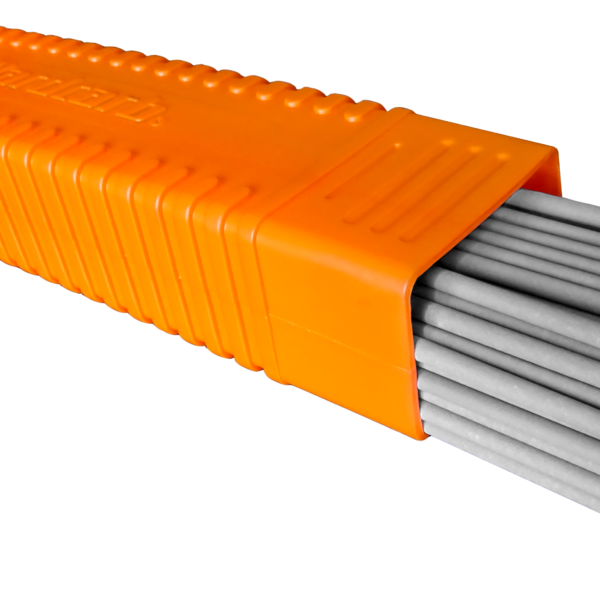- Home
- Main Catalog
- Buffer layers - Build up - Cladding - Joining
- Dissimilar & stainless steels
- Nicrolloy 18.12
Nicrolloy 18.12

A high Cr-Ni stainless steel electrode with controlled additions of molybdenum and low carbon for enhanced corrosion resistance. The electrode is suitable for joining corrosion-proof CrNiMo steels of low carbon content as well as stabilised and non-stabilised steels of identical or similar characteristics which are resistant to chemical agents. The weld metal is resistant to wet corrosion up to 400 °C and scale resistant up to 875 °C in an air and oxidising gases atmosphere. No intercrystalline corrosion is observed due its low carbon content.
Weld deposit characteristics:
The microstructure is austenite with a controlled level of ferrite, normally in the range of 2-10FN depending on the application. Useful for resistance to corrosion and to high temperature scaling up to about 1000°C. The stick electrode is weldable in all positions except vertical-down. It is distinguished by a stable arc, minimal spatter, and very good slag removal.
Recommended uses and applications
» for welding grades AISI 301, 302, 304, 304L, 316 and 316L.
» for use on dairy, food and distillery equipment.
» for creep-resistance at elevated temperatures.
» for pasteurizers, pulp digesters, settling tanks, boiler pumps & pumps handling salt water.
» for joining austenitic to ferritic steels.
Additional info
Anti-wear suitability
| Metal-to-Metal friction Metal surfaces in relative motion forced into contact with or without lubricant. Degradation by the formation of micro-welds between the contacting surfaces. | - |
| High pressure abrasion Wear by relative movement under pressure of mineral particles of suitable hardness, shape and texture to remove material from the metal surface, leaving superficial deformation. | - |
| Cavitation Tearing out of grains from the metal surface by the formation and implosion of bubbles in a liquid in rapid motion. | - |
| Mechanical fatigue Fatigue and formation of cracks in surface regions due to tribological stress cycles that result in the separation of material. | - |
| Thermal fatigue Cyclic exposure to high temperatures leading to permanent deformation by alternate expansion and contraction. Alteration of the structure and properties of the material. | - |
| Hot oxidation Creation of a poorly adhering oxide layer that reforms constantly. Degradation by loss of material thickness. | - |
Workability
| Work hardening Work hardening is the process of making a metal harder and stronger through plastic deformation. When a metal is plastically deformed, dislocations move and additional dislocations are generated. | |
| Edge retention Suitability for creating sharp edges and retaining them during operation. | |
| Machining Machinability is the ease with which a metal can be cut (machined) permitting the removal of the material with a satisfactory finish at low cost. | Highly suitable. |
Mechanical properties
| Yield strength | > 400 MPa |
| Tensile strength | 560 - 620 MPa |
| Elongation A5 | > 32% |
| Impact strength | > 37 J (-60°C) |